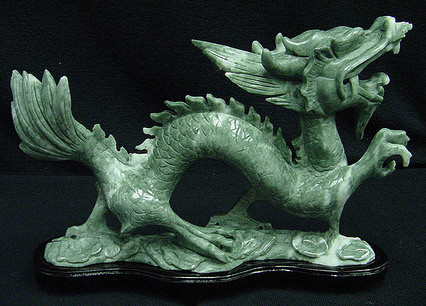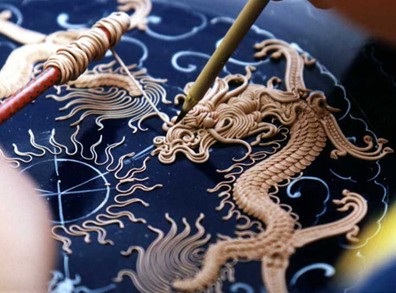Practice & MediaAh Xian works in a variety of mediums. Each of these mediums contributes strongly to the meaning of his artworks. Follow the links below the names of the mediums for more information.
1. BRONZE All the great ancient civilisations worked in bronze. The Greeks are probably the most well known for being the first to create life-sized bronze sculptures. However, the Chinese also worked with bronze as an art medium, independently from the Greeks. The following website explains the lost wax method of creating bronze sculptures, which Ah Xian also uses: 2. CLOISONNE
Cloisonné originated in the Middle East, arriving in China in the 13th-14th centuries. Here it was taken up by the scholars and elite of Beijing, who further developed the technique. In the Ming Dynasty (1368-1644), cloisonné reached a high level of complexity. As a result, today it is most commonly associated with China. Cloisonné is a complex technique involving many steps. This website illustrates the steps to help give you a better understanding of what cloisonné actually is: 3. CONCRETE
We do not often think of concrete as an art medium, and out of all the materials Ah Xian uses for sculpture, concrete is definitely the odd one out. What do you think are some of the differences between concrete and Ah Xian's other mediums? This is a link to an interview in which Ah Xian explains his use of concrete: 4. JADE
Jade sculptures are created by carefully chipping away at a larger jade stone to form the desired shape. However, the symbolism of jade and its significance, especially within Chinese culture, cannot be overlooked when exploring Ah Xian's work. This article explains the significance of jade in Chinese culture: |
5. LACQUER
This is an image of lacquerware. Powder and lacquer are mixed together to form a fine dough, which is then manipulated and layered to make designs on an object - in Ah Xian's case, on sculptures. Laquerware has a long history - pieces have been found dating back to the Neolithic period. However, lacquer did not become a highly artistic craft until the Shang Dynasty (1600-1046BC). Many lacquerware pieces from the Eastern Zhou period (771-256BC) have also survived. This is the earliest time we know of that lacquer pieces began appearing in significantly large numbers. Lacquer remained popular throughout the centuries, and was developed further by elite scholars and artists in China who began to incorporate other materials, such as mother of pearl. Eventually, lacquerware was introduced from China to other parts of Asia, such as Japan and Korea. As a result of this, this medium continues to bear strong Asian connotations. 6. PORCELAIN Porcelain originates from China. By the Ming Dynasty (1368-1644), porcelain was being exported to Europe. It is an iconic medium because it marks the first mass contact of Europe with Chinese art. It became so widespread that Europeans started using “china” as a word to describe “porcelain”. Porcelain is a highly technical and scientific art form. For a long time, Europeans tried unsuccessfully to create porcelain - they lacked the exact materials which the Chinese used, and also lacked the technical knowledge of how to create porcelain. So how is porcelain created? Basically, clay sculptures are heated to 1200-1400 degrees. These high temperatures cause glass and a mineral called mullite to form in the sculptures, which is what gives porcelain its toughness, translucence and pale colour. Follow this link to read about how American sculptor Monica Wakefield works with the medium: ACTIVITY
On a page of your VAPD, create a collage of images of ONE of the mediums discussed above. Then, on the next page, write a paragraph discussing the medium using EITHER the subjective frame OR the structural frame. |


